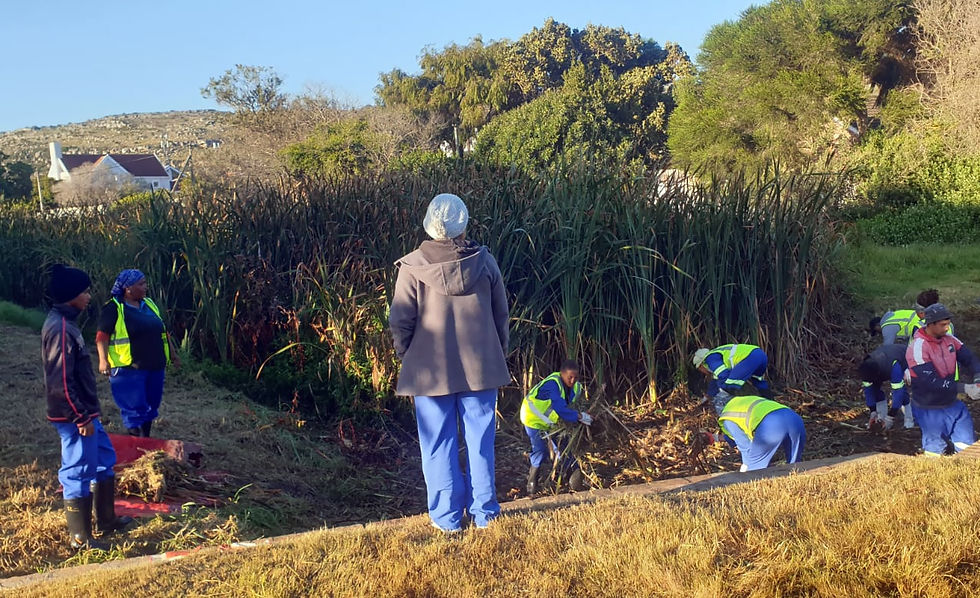Bridging the Baboon Divide
- Steve Pike

- Mar 20, 2023
- 3 min read
Updated: Jun 1, 2023

We can finally report some success in resolving "The Great Baboon Divide" after the KRRA hosted a 'Residents meet the Experts' workshop in collaboration with a team from the Simon's Town Civic Association recently.
Using a refreshingly different format that ensures open dialogue that minimises confrontation, residents were able to gather information and network with experts to get their questions answered, and to engender a positive feeling that communities of the deep south can team up to put pressure on the authorities to improve plans, and improve their execution.
We learned a lot from the panel, which comprised primate experts and wildlife managers such as Professor Justin O'Riain, Dr Dave Gaynor, Joselyn Mormile, Jenni Trethowan and Kim Leeuwner. The panellists were ably facilitated by Peter Willis, with help from Prof Ben Cousins and Nadine Smith, from the Baboon Dialogue team at the Simon's Town Civic Association.
This was a really useful way to make actual progress in putting more coherent and unified pressure on the authorities to work with residents for the betterment of humans and baboons. The KRRA has pledged to join other civics so that we can speak with one voice to the various authorities. Other civic groups include Simon’s Town, Scarborough, Misty Cliffs, Ocean View, Kommetjie, Imhoff’s Gift Sunny Dale / Capri, Da Gama Park, Welcome Glen, and maybe Fish Hoek and Noordhoek.
Please can residents of the above areas look at the draft management plan put out by the city and comment before the end of the month! This is VERY important to empower us as a collective voice to be taken seriously. However, before you visit this link to make your comments, please take a look at the incredibly detailed and thorough:
This is packed with important information and research from top primatologists and others involved in baboon management and the study of their habits and behaviour.

It is a work in progress, but as KRRA, we are looking at aspects that will drive the process forward, such as a 2050 vision of how the baboons and humans can cohabit in the Far South, along with a shorter term plan to hold the line, and to introduce science-based behaviour protocols for residents, many of whom are unfamiliar with a decades-old situation.
Apart of what we expect, or hope, from authorities, we should try to agree about what communities can do for themselves. Of course we do have to be clear about what we collectively and reasonably expect from the authorities and the rationale thereof.
The strategic plan comments due in by 31st March should be consistent with what we all agree on, while focusing on the commonalities that bring unique circumstances and responses, such as the Navy base in Simonstown, steep cliffs in various places, erratic waste collection and management generally, and how businesses operate.
The fact that the City declared land for urban development - often in the face of strong civic opposition and warnings about reducing habitat - should be a factor that makes the City accept responsibility in the same way it should for rezoning exposed pieces of coast for development.
It would be good if to leverage such points and draw links to aspects of, for instance, the City's mandate around safety and environment conservation. We would support a Far South baboon conversation group - not for incidental chatter but to share strategic ideas - something that Simon’s Town could lead with their proven framework for success in giving everyone a voice, as long as it is constructive.
It’s important that we stick with the draft plan process, its shortcomings notwithstanding. However, as we move forward, we need to assist in the development of a detailed feasibility study about all proposals on the table, including the building of fences. This would need to include access, security, construction, energy sources and maintenance practicalities.
Also, some monitors seem to be more capable than others and it might be an idea to have a candidate screening process. NCC cannot legally enable community volunteers. NCC monitors fall under a specific "hunting license" - yes that is the permit that allows them to work with baboons. However, it might be worth proposing the formation of teams who could be trained for the job.
There will have to be a co-ordinated community and school student education programme to deal with the often irrational "fear factor" associated with baboons. We will also try to reduce opportunities for dangerous interactions.
Watch this space.




Comments